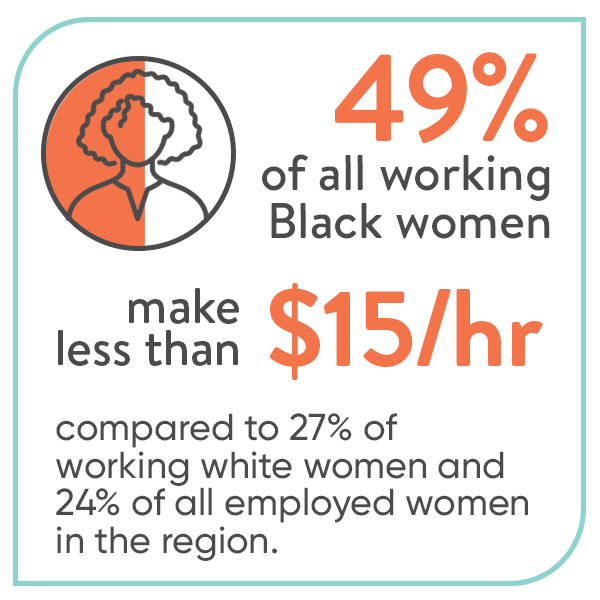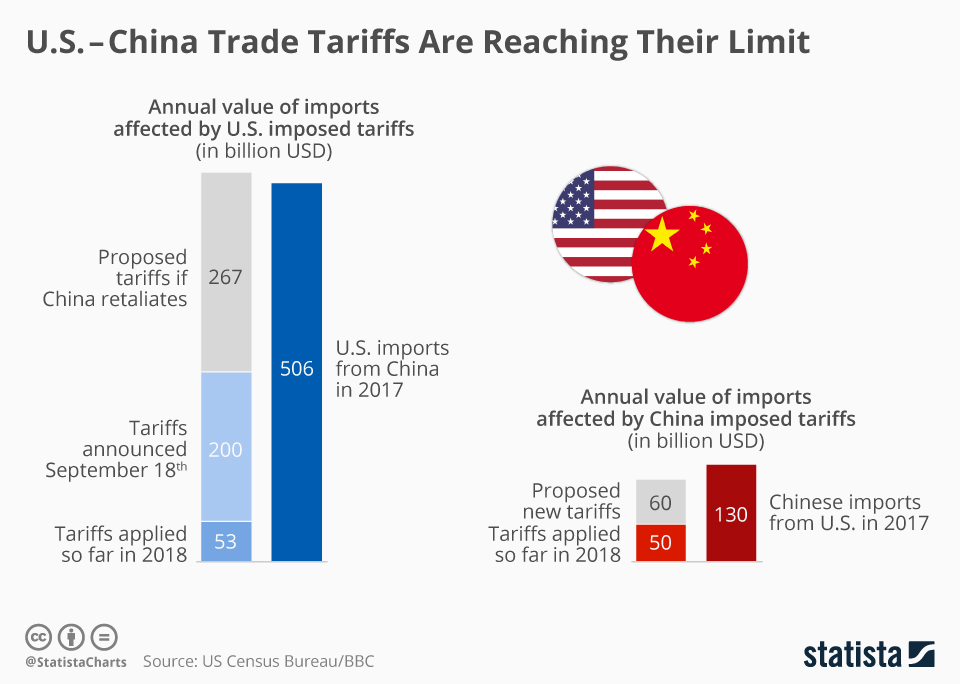Economic mobility for Black Americans has seen notable improvements in recent years, offering a glimpse of hope for those born into poverty. Research from Opportunity Insights indicates that the gap between Black and white Americans in terms of income inequality is narrowing, signaling progress in the fight against systemic barriers. This study sheds light on the dynamics of intergenerational mobility, revealing that while Black millennials have better economic prospects than their Gen X counterparts, significant racial disparities persist. The findings underscore a broader issue of class gaps that continue to widen among low-income white families, posing challenges to achieving true economic equity. As we delve into this complex landscape, understanding the factors that influence economic mobility for Black Americans becomes essential for fostering a more inclusive society.
The landscape of socioeconomic advancement for African Americans illustrates a shifting paradigm as opportunities emerge for those born in disadvantaged circumstances. Recent analyses highlight an evolving narrative of upward mobility for Black citizens, especially among younger generations. Despite persistent barriers, the changing economic climate reveals a gradual reduction in income disparities between various racial groups, while simultaneously exposing the class disparities that exacerbate the inequality. Therefore, a deeper exploration into the nuances of financial ascension, which encompasses elements of social standing and economic success, is crucial for comprehending the broader implications for Black Americans. By examining these developments, we can identify paths toward greater equity and empowerment within the community.
Understanding Economic Mobility for Black Americans
Economic mobility is a crucial topic concerning the ability of individuals to improve their economic situation from one generation to the next. Recent studies highlight a noticeable shift in economic mobility for Black Americans, particularly those born into low-income families. Research from Opportunity Insights indicates that the income prospects for Black millennials have improved compared to their Gen X counterparts. The data suggests that Black Americans born in the late 20th century are beginning to break the cycle of poverty at a faster rate, which indicates that systemic issues surrounding income inequality might be shifting positively.
However, even with these improvements, vast disparities remain evident. For Black individuals born into poverty, while the odds of escaping poverty have increased significantly, the racial earnings gap still exists. The historical context of systemic racism and economic barriers persists, requiring continuous analysis and policy intervention to ensure equitable opportunities. An essential takeaway is that economic mobility is not just about individual gains but is intrinsically linked to broader socio-economic factors that affect entire communities.
The Widening Earnings Gap Among Racial Groups
The recent findings from Opportunity Insights shed light on not only improving circumstances for low-income Black Americans but also on the troubling widening of the income gap among white Americans. While Black millennials from low-income backgrounds show better economic outcomes than previous generations, white counterparts from similar economic backgrounds have experienced declining earnings. This trend highlights the growing class gaps that accompany the narrowing of racial gaps in economic mobility. Society is witnessing a dual phenomenon where some groups make strides in economic mobility while others lag, exacerbating disparities that can affect stability in communities.
It’s critical to note that as the income of low-income Black Americans improves, a stark contrast emerges with the upper echelons of white families who continue to accumulate wealth. The disparity illustrates a unique tension where economic prospects for low-income Black individuals are rising, while their white peers from low-income backgrounds fall behind, leading to a broader societal divide conditioned by race and class. The findings signal the need for policies that address both income inequality and support for groups traditionally marginalized in the economic landscape.
Regional Variations in Economic Mobility
Economic mobility isn’t consistent across the United States; it varies significantly based on geographic location. The study by Opportunity Insights notes that regions like the Southeast and Midwest exhibit particular success for Black Americans born into poverty. For instance, children in Kalamazoo, Michigan, experienced considerable income improvements over just a few decades, signaling positive shifts in local economies and community resources that support upward mobility.
However, these fortunate developments coexist with concerning patterns in other areas where low parental employment remains high. Research shows that children growing up in these economically distressed neighborhoods often face barriers that counteract the benefits of improved mobility experienced elsewhere. Encouragingly, the study reveals that for Black children in communities with thriving adult employment, both racial and class outcomes improve, affirming the connection between community health and individual economic prospects.
The Role of Education in Economic Mobility
Education plays a vital role in economic mobility, acting as a gateway for many individuals to elevate their economic status. For Black Americans, access to quality education is often hindered by systemic barriers, creating significant class gaps. Recent research suggests a correlation between educational attainment and improved economic outcomes, with Black millennials who received higher education benefiting from markedly better financial situations compared to their predecessors. The focus on educational equity becomes critical as it forms the foundation for achieving sustainable economic mobility.
Moreover, it is imperative to recognize the intersection between education and community resources. Areas with strong educational institutions often see higher rates of upward mobility amongst children. The interplay between educational support systems, local employment rates, and community engagement significantly impacts Black Americans’ ability to attain higher income levels and achieve economic independence. Addressing educational disparities through targeted interventions and support programs is essential for securing long-term gains in economic mobility.
The Importance of Community in Mobility Outcomes
Recent studies affirm the significance of community dynamics in shaping economic mobility, especially for Black Americans. Growing up in communities with active parental employment has been shown to boost individual outcomes. The Opportunity Insights research indicates that neighborhoods characterized by high employment rates provide a supportive environment, enhancing the prospects of Black children to transcend poverty. Strong social networks and positive role models in these communities empower individuals to aspire for greater economic success.
Conversely, the research also highlights the adverse effects of living in communities with high unemployment. Black families residing in economically distressed areas not only face limited job opportunities but also contend with broader social challenges, such as declining health and increased mortality rates. To facilitate economic mobility, it’s critical to cultivate supportive communities that foster employment opportunities and encourage the resilience of their residents. Investments in neighborhood development and resources can therefore have a profound impact on lifting Black Americans out of poverty.
Intergenerational Mobility Trends Among Black Americans
Intergenerational mobility trends present a compelling narrative about economic opportunities available to families over successive generations. For Black Americans, the latest data suggests a notable improvement in intergenerational mobility since the late 20th century. The research indicates that children born to low-income Black families are now less likely to remain entrenched in poverty compared to those from starting positions several decades ago. This shift reflects broader societal changes aimed at reducing barriers and increasing access to economic opportunities.
Yet, while intergenerational mobility is on the rise for some, substantial gaps remain. The legacy of historical injustices continues to shape economic landscapes, with racial inequities still disproportionately affecting the Black community. Addressing these disparities requires comprehensive strategies that focus on education, economic policy reform, and community investment. It is essential to recognize these broader trends in order to develop targeted solutions that ensure the gains in mobility are not temporary but translate into lasting change.
Economic Mobility and Policy Reform
Policymaking plays an integral role in shaping the economic landscape, particularly concerning economic mobility for marginalized groups such as Black Americans. The findings from Opportunity Insights underscore the urgent need for reforms that promote equal access to resources, education, and job opportunities. Historically, policies that have addressed class gaps have also significantly impacted Black communities, signaling the need for an intersectional approach in economic policymaking that considers both race and class.
Efforts toward equity should encompass a comprehensive review of existing policies that perpetuate systemic barriers, particularly in housing, education, and employment. Investments in social services, workforce development programs, and equitable education systems can create pathways for Black Americans to achieve growth and resist economic stagnation. By strategically crafting policies that directly address the unique challenges faced by these communities, we can foster an environment conducive to upward mobility and diminish the income inequalities that persist.
Class Gaps in Economic Mobility: A Focus on Black Americans
The widening class gaps in economic mobility highlight crucial disparities within the economic fabric of American society. While the economic prospects for low-income Black Americans show signs of improvement, the challenges faced by their counterparts in the white community present a complex picture. Research from Opportunity Insights reveals that the gap between low- and high-income individuals has grown, even as racial disparities narrow. This contradictory trend illustrates the nuanced layers of inequality that persist and the importance of addressing all dimensions of economic disparity.
Moreover, this challenge is compounded by shifting economic dynamics where access to opportunities becomes increasingly reliant on community circumstances. The experiences of Black Americans navigating poverty underscore the urgency of targeted initiatives to support individuals in overcoming structural barriers. Addressing class gaps requires a multifaceted approach, focusing on bolstering economic opportunities that are inclusive and equitable across racial and class lines.
The Intersection of Race and Class in Economic Outcomes
The interplay between race and class significantly influences economic outcomes for individuals, especially Black Americans. The Opportunity Insights analysis indicates that while Black Americans have made notable progress, persistent class gaps remain concerning their white counterparts. In understanding these complex relationships, it becomes clear that the intersection of race and class shapes the trajectories of economic mobility. Individuals born into low-income Black families have historically encountered disproportionate barriers that impede their path to financial success.
It is critical to address these intersections when discussing policies aimed at reducing economic inequality. Tackling class disparities must consider the unique challenges faced by different racial groups, particularly those historically marginalized. Enhancing collaboration between community organizations, policymakers, and educational institutions is essential to dismantle the systemic obstacles that continue to perpetuate inequality, ensuring that all individuals have the opportunity to thrive regardless of their race or economic status.
Community Engagement as a Catalyst for Economic Mobility
Community engagement emerges as a fundamental catalyst for economic mobility, particularly in fostering environments that support both individual and collective success. For Black Americans, engaging in community initiatives and networks often translates into better access to economic opportunities. The Opportunity Insights study emphasizes how neighborhoods with active community participation and strong support systems enhance upward mobility for their residents, yielding significant benefits for families across socio-economic backgrounds.
Moreover, proactive community engagement can significantly impact public perceptions, policy reforms, and social programs that support the economic infrastructure. Mobilizing community resources and advocacy efforts plays a critical role in addressing income inequality and promoting intergenerational mobility. By empowering communities to take charge of their destinies, we can create a robust framework that enables all members, particularly those historically disenfranchised, to flourish in the economy.
Frequently Asked Questions
What are the factors influencing economic mobility for Black Americans?
Economic mobility for Black Americans is influenced by various factors including access to quality education, neighborhood employment rates, and social networks. Research shows that areas with higher parental employment can significantly enhance income prospects for Black Americans, helping bridge the historical economic divide.
How does income inequality affect economic mobility for Black Americans?
Income inequality exacerbates challenges for economic mobility for Black Americans by creating barriers to access essential resources such as education and job opportunities. Disparities in income growth, particularly between low-income and high-income families, contribute to long-standing economic challenges.
What improvements in economic mobility for Black Americans have been observed recently?
Recent studies indicate that economic mobility for Black Americans born into low-income families has improved, with average earnings for the 1992 cohort surpassing those of the 1978 cohort. This progress highlights a significant narrowing of the income gap with white Americans at the bottom of the economic spectrum.
How do intergenerational mobility trends affect economic prospects for Black Americans?
Intergenerational mobility trends have shown that Black Americans born into poverty have a better chance of improving their economic status compared to past generations. For instance, the reduction in the likelihood of remaining in poverty from 14.7% to 4.1% between the two cohorts born in 1978 and 1992 illustrates positive shifts.
What regional variations exist in economic mobility for Black Americans?
Economic mobility for Black Americans varies significantly by region. Reports show that Black Americans have made notable progress in the Southeast and Midwest, where historically high poverty rates were prevalent. This regional variation emphasizes the importance of location and community resources on economic outcomes.
What role do childhood communities play in shaping economic mobility for Black Americans?
Childhood communities play a crucial role in economic mobility for Black Americans. Studies indicate that children raised in areas with higher adult employment rates and strong social ties experience better economic outcomes in adulthood, underscoring the value of community support in breaking the cycle of poverty.
How does the widening class gap affect economic mobility for Black Americans?
While the racial gaps in economic mobility for Black Americans are narrowing, class gaps are widening, meaning that low-income Black Americans may still struggle to catch up to higher-income peers, particularly as income inequality grows among white Americans, thus impacting overall mobility opportunities.
What significance does the 2024 Opportunity Insights study hold for economic mobility for Black Americans?
The 2024 Opportunity Insights study is significant as it provides comprehensive data indicating that while economic mobility for Black Americans is improving, particularly for those born into poverty, the study also highlights the ongoing economic disparities linked to class and race, emphasizing the need for continued support and policy interventions.
What strategies can improve economic mobility for Black Americans?
Strategies to improve economic mobility for Black Americans include enhancing access to quality education, fostering community development initiatives, creating job opportunities, and addressing systemic barriers to economic equity. These efforts can help bridge the economic gaps that persist in society.
How do changes in employment geography impact economic mobility for Black Americans?
Changes in employment geography have significantly impacted economic mobility for Black Americans by shifting opportunities from economically disadvantaged areas to regions with better job prospects. This trend emphasizes the need for policies that foster job creation in under-resourced communities.
| Key Point | Details |
|---|---|
| Economic Improvement for Black Americans | Recent research shows that economic prospects are brighter for low-income Black Americans, particularly those born in the 1990s compared to previous generations. |
| Earnings Comparison | Black millennials born in low-income families have an inflation-adjusted average income of $21,030 at age 27, compared to $19,420 for Black Gen Xers. |
| Regional Progress | Black Americans see the most economic progress in the Southeast and Midwest, with significant income improvements reported. |
| Growing Class Gaps | While racial earnings gaps are closing for Black Americans, class gaps are widening among white individuals, particularly between low and high-income families. |
| Historic Context | Research suggested that historical socioeconomic factors, like slavery, continue to influence economic mobility today. |
| Impact of Neighborhoods | Children’s economic outcomes are significantly influenced by the employment rates of their neighborhoods, with strong parental employment linked to better adult earnings. |
Summary
Economic mobility for Black Americans has shown promising signs of improvement in recent years, particularly for those born into low-income families. While younger generations, like Black millennials, are experiencing better earnings than previous cohorts, the overall landscape remains complex with growing class disparities among white families. This study highlights the importance of neighborhood environments and historical contexts in shaping economic outcomes, suggesting that continued focus on these areas is crucial for enhancing mobility for all.



